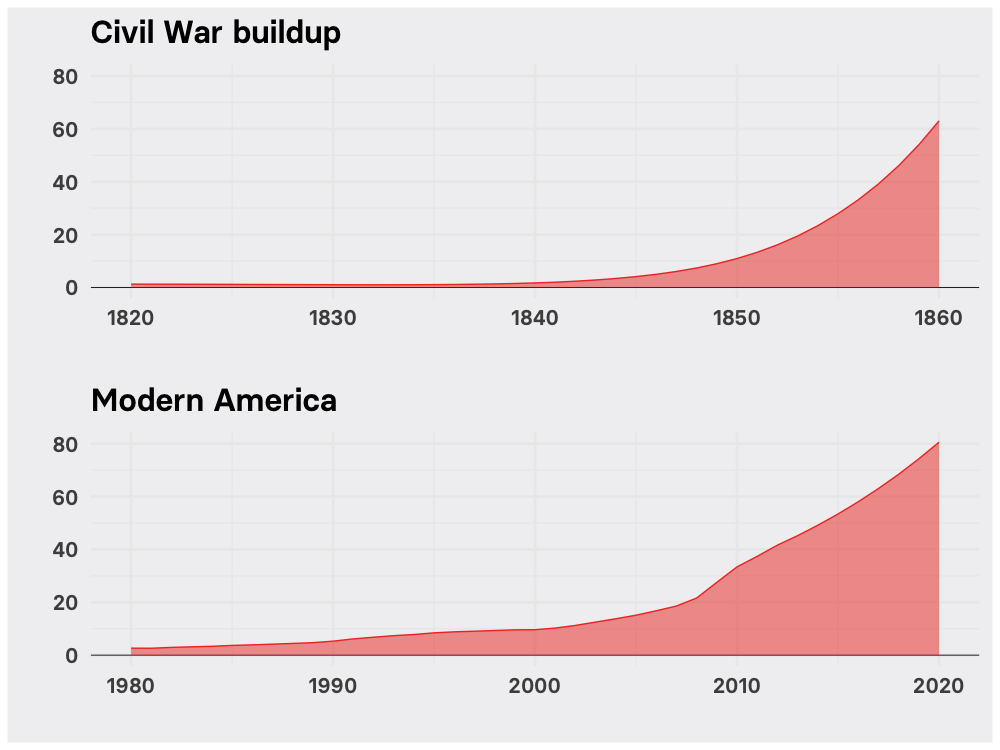Coming Apart or Coming Together
Hello, I hope that you are having a wonderful summer thus far! 4th of July is always a phenomenal holiday.
What path is America on? One of the thinkers who has influenced me the most these past several years is Peter Turchin, a Professor at the University of Connecticut who started out as a theoretical biologist. He has since helped develop a science of history and societies measuring various data points to find relationships and patterns in big historical cycles. I cite his work in both the War on Normal People and Forward.
Peter has observed that societies typically have periods of integration followed by disintegration, each measured in decades. He has developed a model that measures political stress that incorporates income and wealth inequality, wage stagnation, national debt, competition between elites, distrust in government, social mobility, tax rates, urban density, demographics and other factors that have led to instability and conflict in other settings. Unfortunately we are now at Civil War levels:
Turchin has a new book out, “End Times: Elites, Counter-Elites, and the Path of Political Disintegration” that we discuss on the podcast this week. “America is a plutocracy at this point,” Turchin says. “Some people might not like to hear that, but that’s who has power and influence in the current system.” “The top .1% or 1% or 10% of have reaped enormous benefits this past number of decades while things haven’t changed or have even gotten more unaffordable for the vast majority of Americans,” Turchin notes. He calls this process the wealth pump; it exacerbates inequality while immiserating the vast majority.
Peter describes an ever-growing group of aspiring elites that are left on the outside looking in. “Think of it as a game of musical chairs, only the number of players keeps growing while the chairs stay the same.” Peter argues that this predictably leads to political instability according to the experience of other societies. He distinguishes among elites who have some combination of physical coercive power, economic power, administrative power and soft power of culture and influence. In each, there are growing numbers of people who feel themselves on the outside looking in.
He writes, “[H]uman societies follow predictable trajectories into revolutionary situations. But how are these crises resolved? Now that America is in crisis, we want to know what could happen next.” Peter’s model projects surging political violence in the 2020s with repeating cycles of strife and exhaustion.
What does the model recommend to change this path? Peter says, “The most direct thing you could do to help would be to increase the relative wage for most Americans. This would reduce both the immiseration and elite overproduction.”
I expressed to Peter in our conversation that popular frustration is manifesting as political polarization; we are told to blame the other ideological side. He agreed and said, “One of the ways to push toward the positive path is when people on different political sides put aside their differences and start working together to address the root problems.” That’s what most Americans want. Unfortunately, if Peter’s data is an indicator, things might get worse before they get better. Let’s spur a new form of politics as quickly as possible.
For my conversation with Peter, click here. To help Forward break us out of this cycle, click here. For my recent talk at Aspen Ideas on why a new party is needed click here.

